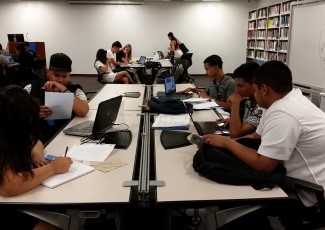Transfer Pathways in California
By Sonya Stinson
August 11, 2015
The key to success with these programs, and what to expect nationwide.
A program designed to improve transfers for community college students moving to institutions in the California State University system has inspired the University of California’s Transfer Pathways, which started last month. Now California community college students have detailed course maps specifying the requirements for transferring their credits to 10 UC majors, and 11 more pathways are in the works. While Transfer Pathways doesn’t guarantee admission to a four-year university, it does eliminate the need to sort out varying requirements from different institutions within the UC system.
“When they get all 21 of those pathways completed, that should address the needs of about 85 percent of our students in terms of the areas in which they transfer to a university,” says Brice Harris, chancellor of the California Community Colleges system. “There are some of those highly technical areas that probably will take more time.”
The development of Transfer Pathways, which got underway about 18 months ago, was driven by faculty input. It was the discussions among faculty members in the community colleges and the UC system that led to the curriculum design for each subject area. Making time for that collaboration was often challenging.
“Our faculty and those at the universities are tremendously busy doing their regular day jobs, so this is just an added burden on them,” Harris says. “I can’t say enough about the faculty in our colleges and in the two university systems and how they rolled up their sleeves over the last couple of years to make all this happen.”
The keys to transfer pathways
As the new program rolls out, administrators are focused on three main objectives.
“The first is to make the movement between California public higher-education institutions as seamless and transparent as possible,” Harris says.
Secondly, once the transition process has smoothed out, university officials hope to leverage that improvement to convince state legislators that more financial resources are needed handle the increased numbers of transfer students.
Finally, program administrators know they need to make students aware of the new program. They’ve already seen with the California State University transfer-improvement initiative how rapidly interest can grow as the program becomes better known. In the first year of that program, only 800 community college students signed up to pursue one of the 1,600 transfer degree programs available. Participation rose to 5,000 in the second year; by 2014, it had reached 12,000, Harris says.
“We expect those numbers to climb dramatically,” Harris says. “In fact, I think they would climb even faster if we had the resources necessary to get out and tell the story.”
Transfer pathways across the country
Harris also expects to see a nationwide trend in transfer improvement take off soon. He notes that Florida already has a strong record of work in this area, and that other states are beginning to take similar steps. As the trend grows, Harris says, faculty members will continue to do the “heavy lifting” to ensure that the programs meet their goals.
“If other states want to emulate what’s been done, not only in California but in other places across the country, they have to find a way to bring faulty together.”












